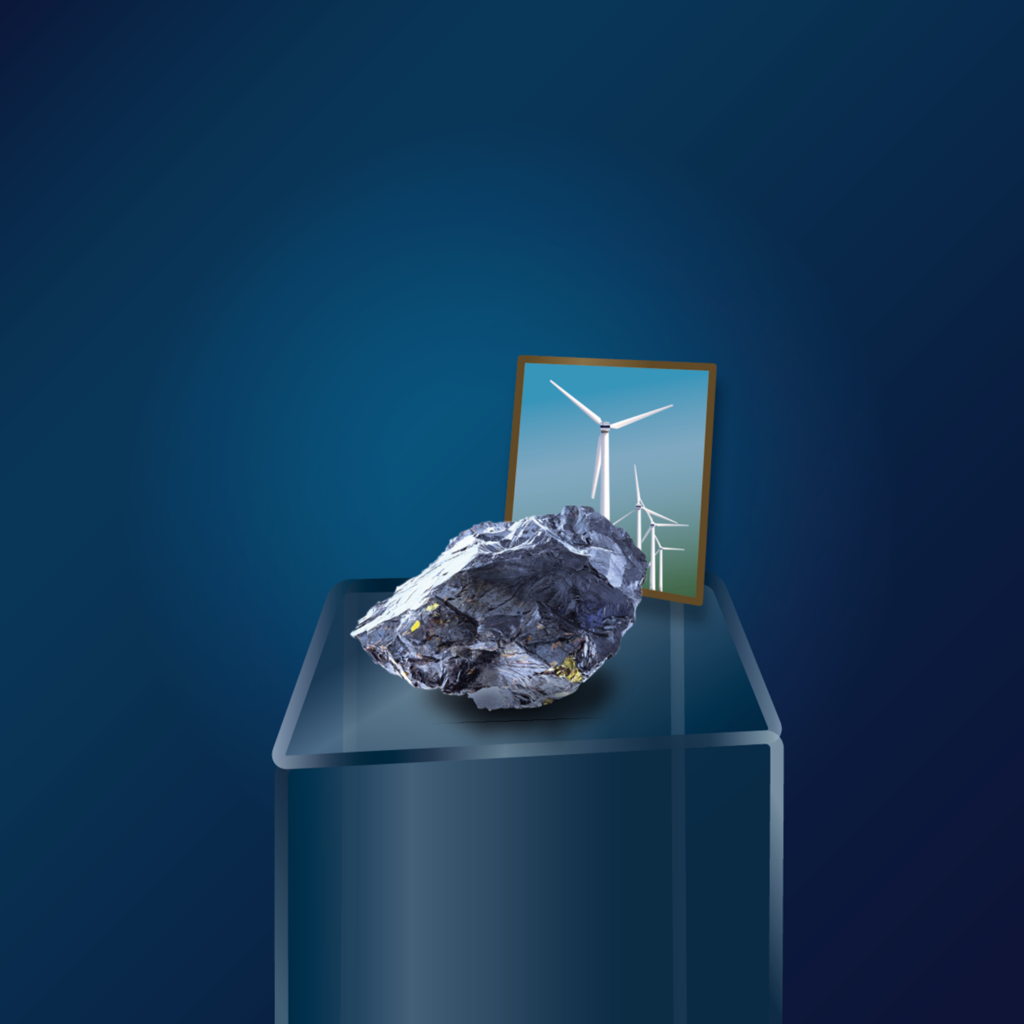This is a sample of eudialyte, a rare earth element. It is collected at Norra Kärr, a former mine north of Gränna near lake Vättern. Eudialyte contains high amounts of neodymium, a material used in electric motors and generators, which was in high demand due to the increased production of electric vehicles and wind power plants.
Norra Kärr was one of few sources of rare earth elements in the EU. Since the start of operations, the mine has been met with fierce protests. Engaged locals and organisations collected signatures and organised protests to shut down the mine due to its proximity to lake Vättern, the main source of drinking water for more than 250,000 people. However, pressure from European industry actors to decrease their dependency on imported “critical minerals” combined with a boom in electric vehicles resulted in the authorities giving the mine permission to operate in 2029, despite the protests.
For some time, Norra Kärr was Sweden’s largest open-pit mine. But the mine was short-lived, and it closed seven years ago, as a massive downpour in 2044 (in today’s standards a 50-year rain) led to severe leakage, a breached dam and toxic chemicals leaking into the lake. Many Swedes can recall exactly what they were doing when the dam burst.
Cleaning up the area is still an ongoing project, and recycling technology for metals and minerals is improving. Today, mining waste can be processed to extract rare earth elements and new types of magnets are entering the market.
Rare earth elements: Seventeen elements that are in increasing demand following the boom in renewable technology. They are used in phones and computers but also in wind power plants and electric vehicles.
50-year rain: In meteorology, the rarity of a downpour is determined based on how much and how long it rains. For instance, if 30 mm falls in 20 minutes, it is a 50-year rain, while the same volume in 10 minutes is a 100-year rain. This does not mean that it will occur once every 100 years, but it is an indication of the rarity of such a weather phenomenon. Climate change increases the intensity and frequency of extreme weather events.
This text is part of the future scenario and study material Beyond the Fossil Era.
